How to become completely invisible on Facebook
Facebook chat: how to become invisible
If you regularly use chat on Facebook, sooner or later you will come across the fact that you will not be able to communicate with a certain person. Maybe only this evening or just this day off. Of course, you can disable the chat, but then you will not be able to communicate with other users. And if, in addition, someone should write to you and you are looking forward to the message?
There is an exit. To do this, you need to open a chat-tape on Facebook.
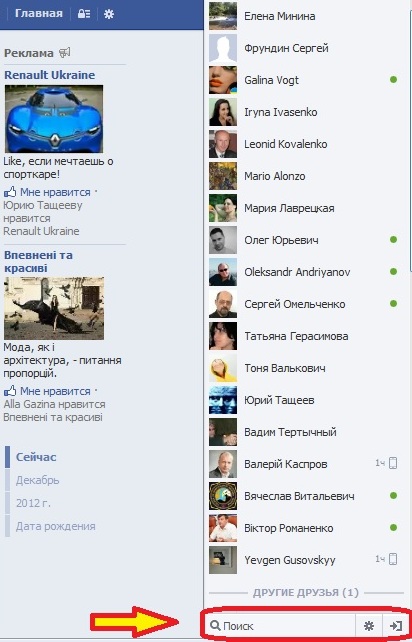
On the bottom line you will see a gear icon. These are the "Options". Click on it. And then in the appeared window select the line "Advanced settings" and click on it.

Now choose the most acceptable option for you. For example, you can enter the name of a friend or friends who will see you in offline status. Other users will see you online. To do this, you need to select "Enable Chat for all friends except ..." and enter the user name (users) in the empty field. Then click the "Save" button to set the mode that suits you.
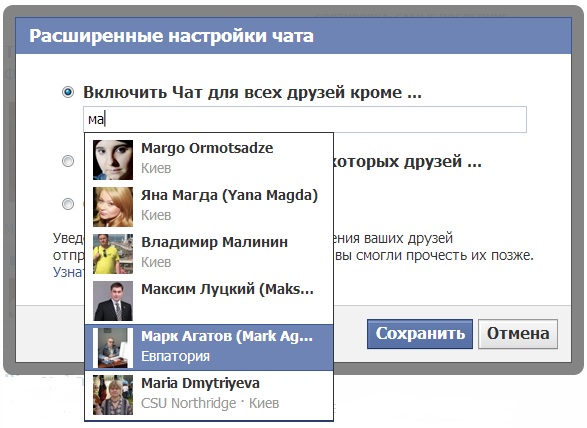
Or you can select "Enable Chat for only some friends ..." and, as in the previous case, enter the names of those users whom you would like to communicate with. The other friends will only see your status offline. Do not forget to click the "Save" button.
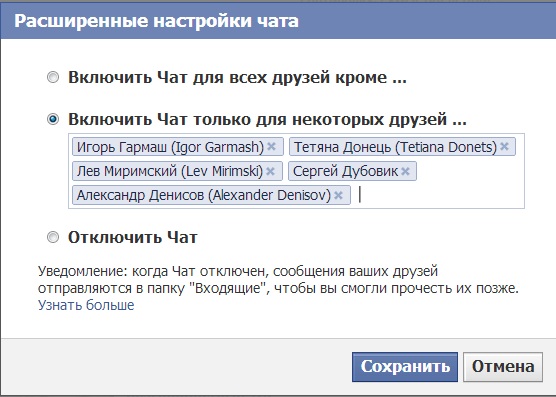
How to become completely invisible on Facebook
The law of transition of quantity in quality is fair and for the Internet. With more than a billion Facebook users "outgrown" the form of the social network - now it performs the function of an online passport, a human identifier in the virtual space. Indeed, today Facebook is simply necessary to access the right information. The largest social network has literally pinned Internet users to the wall - thousands of sites give access to their content only after authorization through Facebook. Often this factor is decisive when registering a new user - it happens that not so much Facebook itself is needed, as an opportunity to freely travel on the modern Internet.
As a result, a Facebook user is literally exposed to the whole world. Personal data, photos, places visited, search queries, personal preferences - all this goes straight to the hands of advertisers, from targeted spam which simply does not have a salvation - due to what Facebook and flourishes as a commercial company. And it's not just advertising. The very fact that all social activity can be studied in detail by strangers, causes serious discomfort.
But Facebook does not just want to release users from the screen of its "radar" - the more information about the user will bring social network, the more it will work. As Facebook develops, more and more default settings change so that as many details become available. However, nothing prevents the user from changing the settings manually. To do this, you need to understand in detail what the next instruction will help.
To access the settings for accessing personal data, click on the "gear" on the top panel of the Facebook home page and select "Privacy"

To begin, we hide all the posts from prying eyes - turn Facebook into a personal diary. In changing all the settings, including "Who can see my materials", a uniform principle is observed - click on the "Edit" button located at the right edge ...
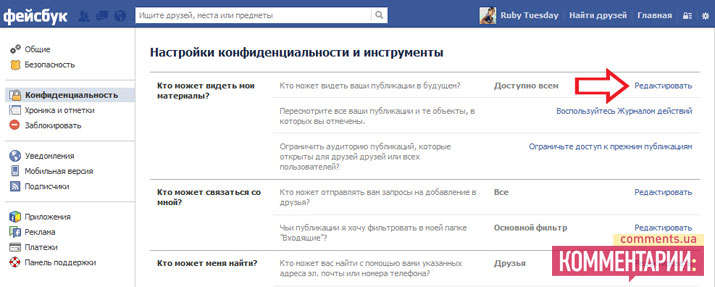
... and in the pop-up menu that appears, select "Only me", or another "strict" option, from the name of which it is clear who will get access to the data.
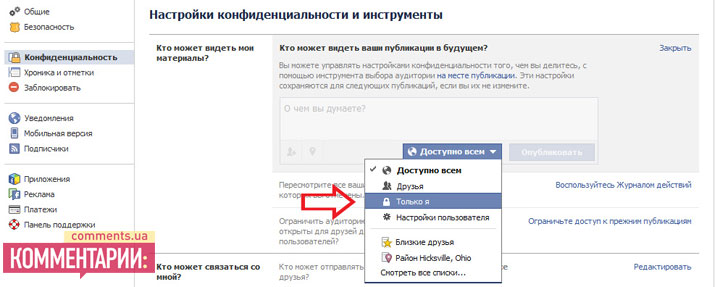
Similarly, you can close incoming messages from unauthorized persons. It is not possible to deactivate messages completely, but there is an option to accept them only from "friends of friends".
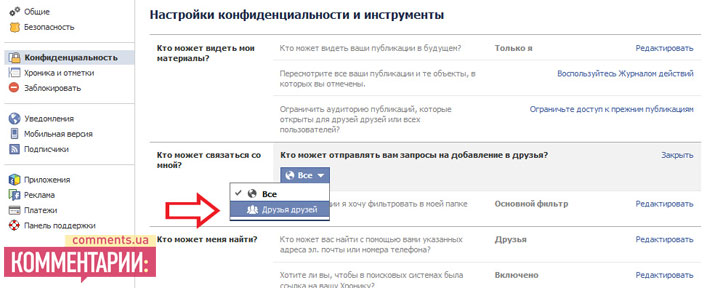
It is also useful to include strict "Incoming" filtering - and Facebook can no longer try to spam "messages of those who might be interesting to you."
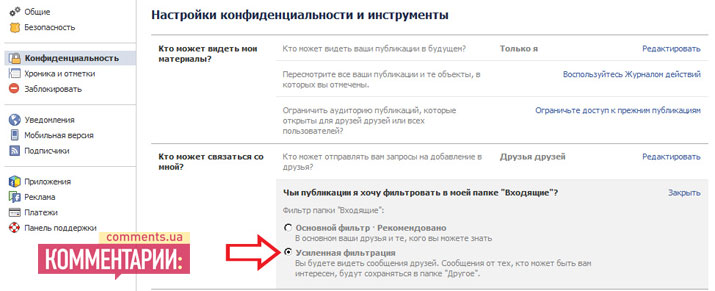
One of the most useful settings allows you to cut off the leakage of the postal address and phone number - with it, the circle of "admitted" to the most critical personal data is limited to "friends."
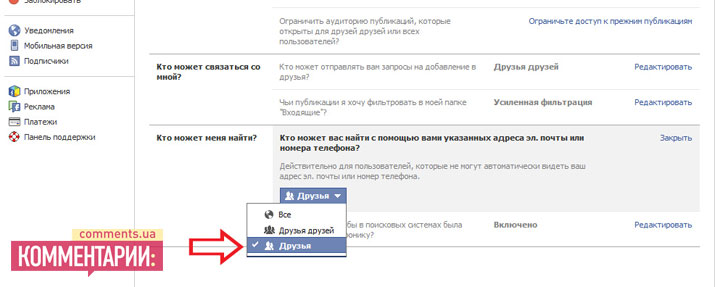
The next option forbids search engines to "fumble" on your Facebook page - activity can not be traced from the "outside world".
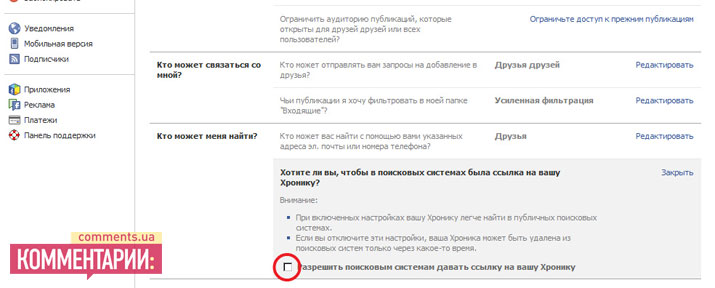
The next set of settings is devoted to the "Chronicle" Facebook (in the English-speaking interface called Timeline). By installing the most rigorous settings on this page, you can turn your Facebook into a real bunker. To do this, use the same principle as on the "Privacy" tab - click on "Edit" next to each setting and select the most "strict" item from the drop-down menu.
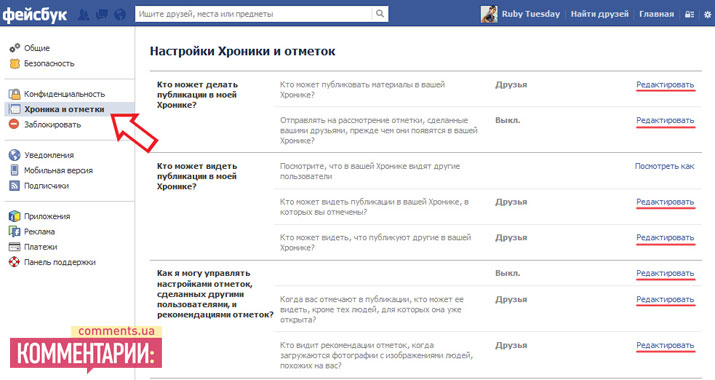
After changing all settings, the settings page "Chronicle and marks" should look like this:
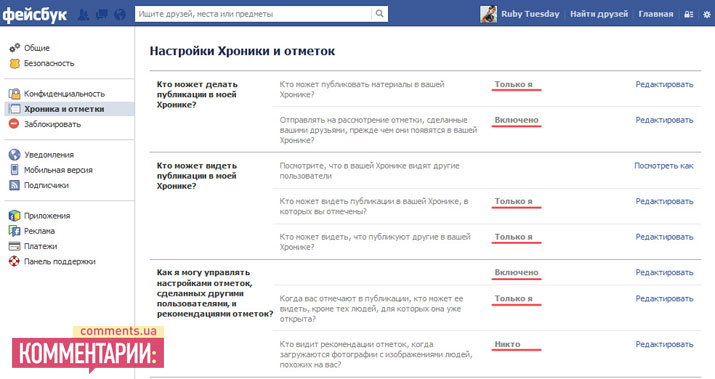
One of the important channels for the leakage of personal data (as well as an inexhaustible source of spam) are applications and online services that require personal data from Facebook to run. There is a radical way to turn off applications - the "central switch" located here:
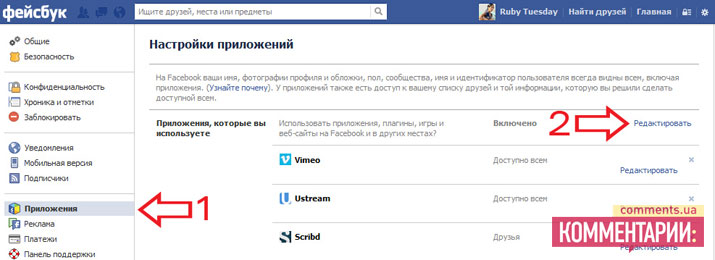
If you "pull" it, the application settings page will look something like this:

However, many users, in fact, registered on Facebook for the sake of the opportunity to use applications. Therefore, disabling the "central switch" will lead to an undesirable loss of registration data and relationships on all services where the user registered using Facebook.
To avoid such cases, you can perform more complex, but also more precise settings - selectively delete unused applications, and in the remaining ones turn off the "visibility" for prying eyes and annoying the distribution of "special offers":
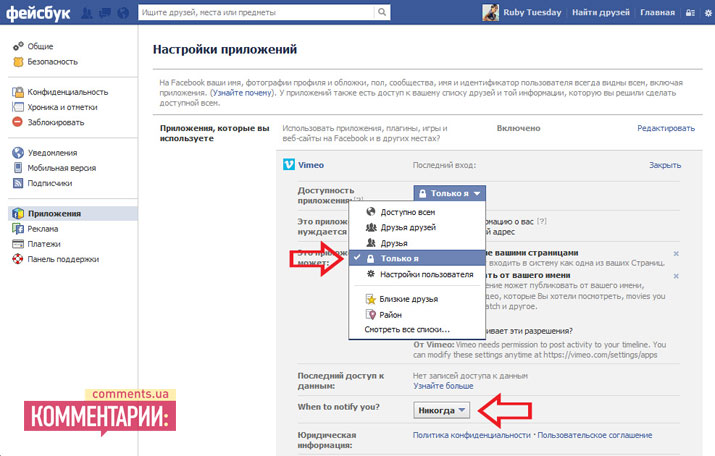
The last block of settings concerns advertising on third-party sites and "social" advertising. These options are useful to close in the same way as the privacy options have been closed, namely - click on "Edit" next to each of them ...

... and select the item "Nobody" from the drop-down list
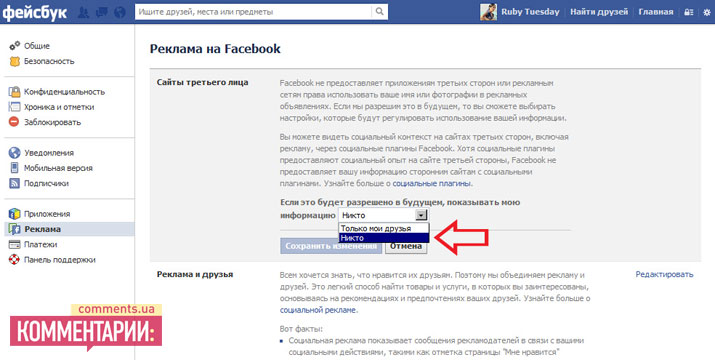
The penultimate clause prohibits advertisers from using your name and photo from the profile on Facebook in their advertising products - this is important, since all Facebook users gave social networks such powers at the time of registration. And the latest setting disables the "predictions" in the advertising issue in the spirit of "your friends choose it."
On this "anonymization" of the Facebook profile is completed. Fortunately, all settings (except for the "central switch" of applications) are reversible - they can always be returned or made slightly more open. But what can not be returned back is personal data that once fell into the open spaces of the Web.


Comments
When commenting on, remember that the content and tone of your message can hurt the feelings of real people, show respect and tolerance to your interlocutors even if you do not share their opinion, your behavior in the conditions of freedom of expression and anonymity provided by the Internet, changes Not only virtual, but also the real world. All comments are hidden from the index, spam is controlled.